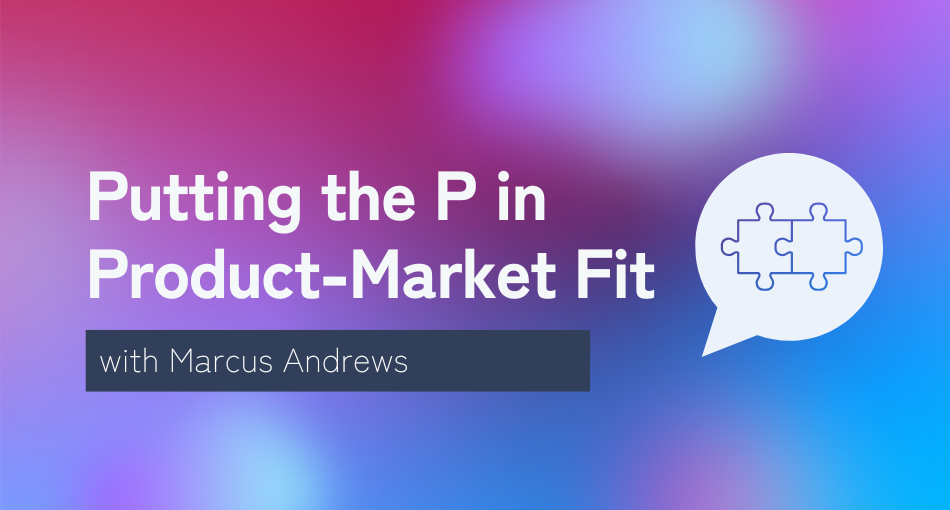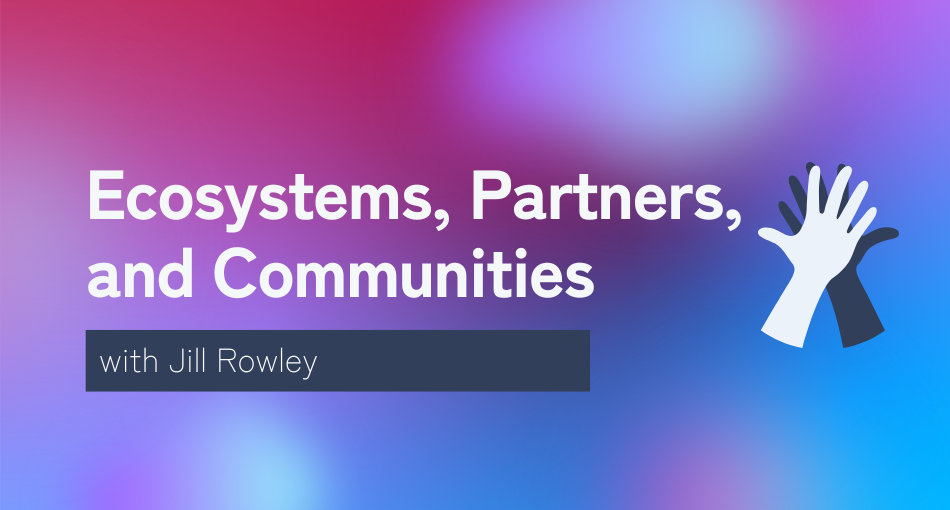 |
On this episode of the REVolution Podcast...
listen in as Marcus Andrews talks about the current state of B2B product marketing and how things are evolving as organizations shift from growth at all costs strategies to having more focus on retaining and growing existing customers. He also shares four things every go to market team should be considering as we face uncertain times in the coming quarters.
Listen now, check out the transcript, and subscribe
Read along with the episode transcript here or find and subscribe on your favorite podcast platform.
About our guest
Marcus Andrews is the Director of Product Marketing at Pendo and the author of Narrative Design for Business (learn more about that here, too). He's a well respected member of the Product Marketing Alliance and an authority on all things product and how it influences the rest of the organization. Follow Marcus on LinkedIn to learn more.
Episode takeaways
A love for product marketing
The episode kicks off with Marcus sharing more about his background and how he got his start in product marketing [1:30]. He serves as the Director of Product Marketing at Pendo and has spent the past ten years in SaaS at companies ranging from Wildfire (acquired by Google) to HubSpot. The experiences he has gained at these market leading companies on sales, marketing, product led growth, and beyond have been huge contributors in his approach and guidance he shares throughout this episode.
Narrative design
Mary asks Marcus to share more about narrative design and what it means in practice [3:40]. He begins by discussing crowded technology markets, like the one he encountered when marketing Wildfire and like many of us deal with today. Narrative design is all about standing out and being different and avoiding the tendency to look and act like big category winners. Instead, Marcus says it’s important to take the time to design your narrative in a way that is compelling and unique. He shares a story from HubSpot founder, Brian Halligan, and how much he focused on their story. Alex then asks why Marcus thinks more companies don’t get this narrative right and he summarizes his answer in this way: there’s a lot of safety in the status quo and if you’re a smaller organization you think you need to behave, sound, and act like the bigger players. Instead, Marcus urges organizations to look at what others are doing and then push yourself to step outside of the comfort zone.
Then, Alex asks Marcus what he thinks comes first - category creation or narrative [8:30]. Marcus says he thinks only a small percentage of companies need to actually create a category; whereas, every company has the potential to design their narrative well. From there, we dive into a few examples where we see successful narrative today.
Unpacking the current market dynamics
Next, we dig into what is happening in the current market: budgets are tight, buyers are being conservative, valuations are down, people are tired, everybody's a little bit freaked out [14:47]. Marcus says everyone needs to get more efficient immediately and that new growth isn’t going to be the only thing that matters. Instead, he sees a shift happening where retention and expansion within existing accounts is becoming more critical. Marcus cites how teams are using Pendo differently now to focus on increasing adoption and thereby retention and how there’s a big movement to create more self-service products where both external users and internal teams don’t need engineering to do everything. The big summary is that many organizations cannot sustain growth only by adding more people to teams. Instead, they need to be more efficient and effective with their products and overall resources.
Four considerations all B2B teams should be thinking about
Building off of what’s going on in the market, we go through four key things every team should be considering now as they make strategic adjustments [21:50].
First is to ensure you have product-market fit and are able to retain customers.
As buyers become more conservative and have more options in the market for how to solve their challenges, it will also likely cost more to acquire a new user. ; therefore, making it even more critical to retain them [22:26]. From there, you have to continue investing in your product roadmap to ensure you’re able to add new features and expand your footprint with those customers.
Second is to lower your cost of acquisition with a product led motion.
Marcus talks about this topic by leading with how sellers are often stretched too thinly — they need to know and do too much [26:09]. Instead, there’s an opportunity to get to know your ICP (ideal customer profile) more deeply and grow more efficiently using a product-led motion. This allows the users to self-educate on your product so that by the time they’re ready to buy, the seller doesn’t have so much work to do thus lowering the cost of acquisition and time to close. We also talk about the different ways PLG (product-led growth) shows up for enterprise customers and mid-market alike.
Third is all about not making poor product decisions.
We discuss how data-assisted feedback loops, both qualitative and quantitative, are critical as teams continue refining their product [34:45]. Marcus says the biggest issue he continually sees is that teams get too far away from the customer. He suggests you have to talk to a lot of customers and collect what they share at scale. This can be achieved via polls, surveys, net promoter scores (NPS), or other means, and it’s critical you use this data to guide decision making versus gut feel alone. In addition, Marcus suggests reporting on product adoption broadly because if your product isn’t adopted, you'll never be successful. We also briefly touch on how things change when product teams become responsible for a revenue number and are charged with working cross-functionally via product operations teams.
Fourth is all about product-led customer success.
While we focus a lot on product-led growth in this conversation, we wrap up by talking about the easiest place for product teams to have an impact using product-led service and support [43:15]. The first reason for this is that it’s customer driven. Essentially, this means a user can self-diagnose and service what they may need with your product. Oftentimes, this is achieved via a resource center with a knowledge base and tooltips in an application.




%20(5).png)
%20(1).png)
